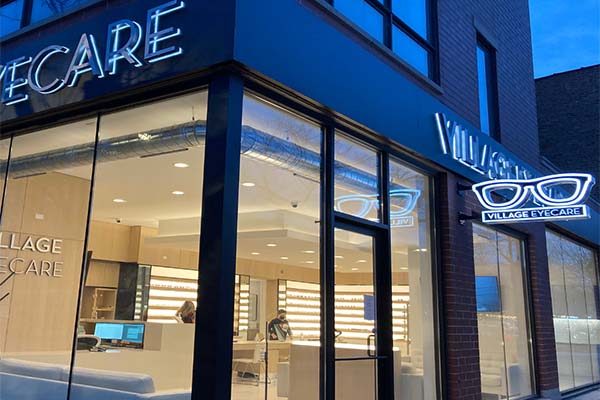Leading Eye Doctors in Andalusia: Schedule Your Visit Today
Leading Eye Doctors in Andalusia: Schedule Your Visit Today
Blog Article
Comprehending the Different Vision Improvement Procedures Available for Clearer Sight
In the realm of vision adjustment treatments, a plethora of choices exist to resolve refractive errors and supply people with more clear view. From the extensively identified LASIK surgical procedure to less invasive procedures like PRK and implantable lenses, the field of ophthalmology supplies an array of techniques tailored to fit various requirements and preferences. Each procedure comes with its own set of factors to consider, advantages, and possible threats. Comprehending the nuances of these vision adjustment techniques is important for making informed decisions about one's aesthetic wellness. Allow's discover the intricacies of these treatments and clarified the course to accomplishing improved vision clearness.
LASIK Surgical Procedure
LASIK surgery is a common refractive treatment used to correct vision troubles such as nearsightedness, astigmatism, and farsightedness. This medical method, which stands for Laser-Assisted in Situ Keratomileusis, intends to improve the cornea to boost how light is focused on the retina, eventually boosting vision clearness.
One of the primary advantages of LASIK surgery is the rapid renovation in vision experienced by clients. Overall, LASIK surgical procedure is a popular option for people seeking a long-lasting solution for their vision issues.
PRK Treatment

PRK is an ideal choice for people with thin corneas or those at a higher danger of eye injuries, as it does not entail creating a corneal flap. The healing procedure for PRK is somewhat longer compared to LASIK, as the epithelium requires time to regenerate. Individuals might experience pain and fuzzy vision for a few days adhering to the procedure.
In spite of the longer healing time, PRK can produce superb lead to vision enhancement, making it a valuable choice for those that might not appropriate candidates for LASIK surgery. - Eye Doctors in Andalusia
Implantable Lenses
Unlike PRK where the cornea is reshaped straight, implantable lenses provide one more method for dealing with vision by inserting man-made lenses inside the eye. This procedure is particularly advantageous for individuals with high levels of nearsightedness, farsightedness, or astigmatism who may not be ideal candidates for laser surgical procedures like LASIK or PRK.
Implantable lenses, likewise called phakic intraocular lenses, work by supplementing the eye's all-natural lens with a man-made one. These lenses can be placed before the all-natural lens (former chamber) or behind the iris and in front of the natural lens (posterior chamber) By changing the power and positioning of these lenses, eye doctors can effectively correct refractive mistakes and boost aesthetic acuity.
One benefit of implantable lenses is that they are removable and exchangeable, providing adaptability for future changes. As with any type of medical treatment, there are risks involved, such as infection or cataract formation. Individuals thinking about implantable lenses need to seek advice from with an eye care professional to identify the most appropriate choice based upon their specific requirements and eye wellness.
Corneal Rings

The treatment for putting corneal rings is minimally intrusive and relatively quick, often performed as an outpatient treatment. Throughout the surgery, the eye doctor makes a tiny incision in the cornea and inserts the rings at a particular deepness. When in position, the rings assist to reshape the cornea, providing a smoother surface for light to enter the eye, which can lead to more clear vision.
Corneal rings are taken into consideration a pop over to this site relatively easy to fix procedure, as they can be gotten rid of or replaced if required. While they may not totally eliminate the need for glasses or contact lenses, corneal rings can considerably boost vision quality and overall visual comfort for individuals with keratoconus or other corneal irregularities.
Refractive Lens Exchange
Adhering to the adjustment of corneal abnormalities with procedures like corneal rings, another vision correction strategy that can deal with refractive errors is Refractive Lens Exchange (RLE) RLE is a surgery that includes changing the eye's all-natural lens with a man-made intraocular lens (IOL) my latest blog post to remedy refractive mistakes such as nearsightedness, presbyopia, and farsightedness. This treatment is especially helpful for individuals who may not be appropriate prospects for procedures like LASIK or PRK due to elements such as thin corneas or high refractive mistakes.
RLE belongs to cataract surgical treatment, as both include eliminating the eye's natural lens; nevertheless, in RLE, the lens is clear, not gloomy as in cataracts. The artificial lens implanted throughout RLE can be customized to attend to the person's specific refractive error, offering clear vision at numerous ranges. Recuperation time for RLE is fairly quick, and clients can anticipate enhanced vision soon after the treatment. Just like any kind of surgery, potential risks and complications exist, so an extensive appointment with an eye care expert is vital to establish if RLE is the appropriate vision adjustment option.
Final Thought

In the realm of vision adjustment procedures, a wide variety of choices exist to attend to refractive mistakes and provide people with clearer sight.LASIK surgery is a common refractive procedure used to fix vision issues such as farsightedness, astigmatism, and nearsightedness.While my website likewise a common refractive treatment, the PRK (Photorefractive Keratectomy) technique differs from LASIK surgery in its method to dealing with vision problems.Following the correction of corneal abnormalities with procedures like corneal rings, one more vision modification strategy that can address refractive mistakes is Refractive Lens Exchange (RLE) LASIK surgical procedure, PRK treatment, implantable lenses, corneal rings, and refractive lens exchange are all options that can deal with different vision issues.
Report this page